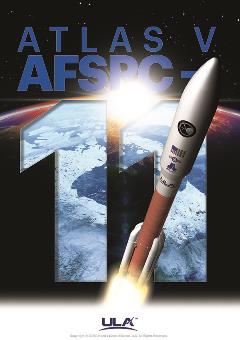Atlas V 551
Producing more than two and a half million pounds of thrust at liftoff, the Atlas V 551 rocket is the most powerful in the Atlas V fleet. In its more than 10 years of service, the 551 rocket has launched groundbreaking missions for our nation—from the critically important MUOS constellation to historic science missions including New Horizons, the first mission to Pluto and the Juno mission to Jupiter.
A United Launch Alliance (ULA) Atlas V 551 will launch two spacecraft to a geosynchronous transfer orbit.
The mission of CBAS is to augment existing military satellite communications capabilities and broadcast military data continuously through space-based, satellite communications relay links.
Primary mission objective for the EAGLE platform is to demonstrate a maneuverable ESPA based space vehicle design which can accommodate up to six hosted or deployable payloads in GEO, and can be cost effectively replicated for multiple payload missions to either a GEO, LEO or GTO orbit. EAGLE experiments will demonstrate enhanced capabilities in space system anomaly resolution and the capability to supplement ground based space situational awareness assets from a geosynchronous platform. EAGLE experiments will also provide new technologies to detect and identify system anomalies such as space weather events and characterize collision events due to micrometeorites.
Space Launch Complex-41
Space Launch Complex-41 (SLC-41) is ULA's East Coast launch pad for the Atlas V rocket. Launch vehicle integration and testing, spacecraft mate and integrated operations occur in the Vertical Integration Facility (VIF). The rocket rolls from the VIF to the launch pad prior to launch.

